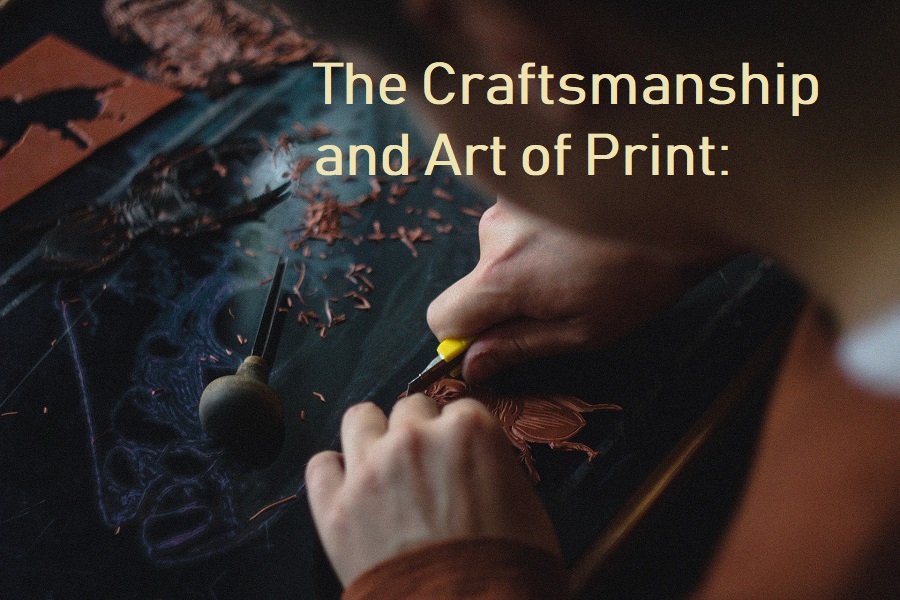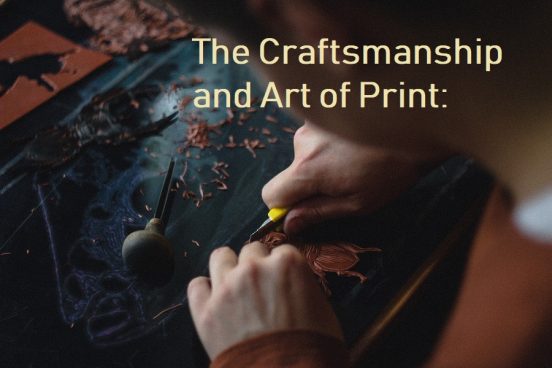
Clement (1997) offered fascinating descriptions of the evolution and operation of several iterations of printing presses, but I struggled to imagine the performance of men handling these tools, organizing the carved plates, applying inks and cranking various parts of the machines. I felt inspired to locate a few videos demonstrating the process.
How a Gutenburg Printing Press Works:

An Introduction to Letterpress Printing with Mr Smith:

The second video, from the William Morris Gallery in the UK, was particularly interesting in how it enriched my understanding of Bolter’s term remediation, which is when a new medium replaces an older one by claiming to do a better job and refashioning the cultural space. (Bolter, p. 18-19) Watching Mr. Smith in the second video navigate his print workshop, style a single page of writing and then use a press to print it provided me with a different conception of the remediation of writing to printing. Instead of seeming “industrial”, “mechanical” and “less human” it suggested to me a new skilled trade and art to developing printed pages. These are some of the nuanced cultural shifts that could get lost if we only focus on the clinical descriptions of how printing functioned and served to increase the amount of printed content available. It’s interesting to me as well, that “print” in this original conception of the word remains a form of “fine art” today, having borrowed and re-organized characterizes of the printing press to re-invent itself (or remediate) into a more abstract form of communication. (art)
This reminded me of an article I read a few years ago about the use of computational textiles in computer science education. Bueshley, Eisenberg, Catchen and Crockett (2008) studied a group of students who used LilyPad Arduino to design and build their own wearable textiles. This project explored the traditions of technology automating, or making tasks easier and entertainment (2008, p. 423) Blending digital skills with craftsmanship is what made me think about this article because, watching videos about the printing press I found myself nostalgic for the days when printing was slower, more labour intensive, and more of a trade than it is today. But, even as I might lament the loss of those characteristics of print in modern times, I know that new combinations of technology and processes reinvent themselves creating opportunities to re-craft the digital world of print. Like learning coding in the context of developing wearable clothes, digital texts will (and have been) combined with more tangible structures to create opportunities that hearken back to the olden days of the laborious process of operating a printing press. I struggle to think of an example; I wonder if 3-d printing might be one? 3-d printing is the penultimate (no pun intended) in digital becoming tangible, but despite sharing the term “print” I’m not sure how explicitly it correlates to writing, reading or speaking.
EDIT: I’ve been thinking about this video since I submitted this post. I wanted to add it as a comment but the lack of embed code prevented me.
An example of what can happen after technology is remediated by another. It doesn’t disappear, often it just transforms:
References:
Bolter, J. D. (2001). Writing space: Computers, hypertext, and the remediation of print. Routledge.
Buechley, L., Eisenberg, M., Catchen, J., & Crockett, A. (2008). The LilyPad Arduino: Using computational textiles to investigate engagement, aesthetics, and diversity in computer science education. Proceedings of the twenty-sixth annual SIGCHI conference on Human factors in computing systems (pp. 423-432), Florence, Italy, 5-10 April.
Clement, R. W. (1997). Medieval and Renaissance Book Production: The Printed Book. In R. Clement (Ed.),Books and Universities.
Huyett, S. (Producer). (2014, March 3). How a Gutenberg printing press works [Video file]. Retrieved June 10, 2018, from https://youtu.be/DLctAw4JZXE
Keep, C., McLaughlin, T., & Parmar, R. “Manuscript Circulation.” The electronic labyrinth, 1995, http://www2.iath.virginia.edu/elab/hfl0262.html. Accessed June 11, 2018.
William Morris Gallery. (Producer). (2014, May 19). An Introduction to Letterpress Printing with Mr Smith [Video file]. Retrieved June 10, 2018, from https://youtu.be/mmg7yCEphrA



EdPawliw
June 18, 2018 — 8:58 pm
Hi Sally
Very interesting videos, thank-you so much for searching these out. Your post brought to mind the spirit duplicators used back when I was a student (or should I use the period appropriate term pupil). It was a special privilege to get picked to learn how to operate and run duplicates for the teacher. Inspired by your finds, I searched out an instructional video for these machines. Since we cannot embed a video in a comment (that I am aware of) here is the link for those who do not know what these machines are: https://www.youtube.com/watch?v=ccYLLzpeVnU. At about 2:06 you will see a machine very similar to the one our school had. At about the 8:00 minute mark the setup and use of the machine is described. I can still remember the smell of the duplicating fluid that was used. Believe it or not, when I took my education degree in the late 1980s we had to produce duplicates using one of these machines as part of an educational technology course because a few of these were still out there being used. This mechanization of duplicating sure made life easier for the teacher…
sally bourque
June 20, 2018 — 4:08 pm
Hi EdPawliw,
Thanks for sharing the video and your experience with spirit duplicators. I had never heard of those devices until now and enjoy the mystical sounding name.
It’s funny how society (and education) went from wooden/stone tablets, to paper, to machines that mass produce print on paper, now back again to tablets (of the digital variety) and efforts to reduce the use of paper. What will the next iteration be I wonder? When will we break the cycle of tablets, papers and pen-like devices?
Nathan shared an article on the post titled “Experiences from a Millennial” about how sounds and images are becoming a universal language that could someday replace print/prose. This is a difficult future to imagine. I think there will always be a place for prose in a world outside of technology. However, if we continue to blend technology with our physiology perhaps the need for text will disappear completely.